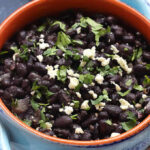Introduction: In the world of competitive sports, particularly demanding disciplines like soccer, nutrition plays a pivotal yet often underestimated role. For young, aspiring soccer players in Mexico striving for elite levels, adequate nutritional intake is not just about general health; it’s a cornerstone of enhanced performance and the establishment of lifelong healthy dietary practices. Recognizing this crucial link, a recent study delved into the nutritional landscape of young Mexican Soccer players to understand their dietary habits and nutritional status.
Anthropometric Profile and General Health: The research focused on seventy-two male soccer players aged 15-20, representing four junior teams from a prominent Mexican National Soccer League club. Anthropometric measurements, including height, weight, and body composition, revealed that these athletes generally fell within the normal range compared to their international adolescent elite soccer counterparts. Furthermore, key biochemical markers such as plasma glucose, urea, creatinine, lipid profiles, and total proteins were largely within healthy limits for this age group. However, the study did note some areas of concern, with a notable percentage of players exhibiting hyperuricemia (14%) and elevated total cholesterol levels (20%), highlighting potential areas for dietary intervention and monitoring.
Energy and Macronutrient Intake: When examining energy expenditure and dietary intake, the study found that overall, the young Mexican soccer players met the general energy demands of their sport. However, a closer look revealed that two of the teams demonstrated significantly lower energy intakes than their estimated requirements, suggesting potential energy deficits that could impact performance and recovery. While macronutrient intake, including carbohydrates and fats, was generally within recommended ranges, protein intake stood out as being higher than advised. Micronutrient consumption, on the other hand, was generally above the recommended daily allowances for the general population, indicating a potentially adequate intake of vitamins and minerals.
Dietary Habits and Areas for Improvement: The dietary patterns of these young soccer players revealed a reliance on specific food groups. Their diets were primarily based on cereals, grains, and potatoes, alongside a considerable consumption of meat, poultry, fish, and eggs. Interestingly, biscuits and confectionery also featured prominently, suggesting a possible over-reliance on processed and sugary foods. Conversely, the intake of fruits, vegetables, and milk and dairy products was notably low, indicating a potential deficiency in key vitamins, minerals, and dietary fiber crucial for overall health and athletic performance. Pre- and post-exercise meal choices did show an appropriate focus on carbohydrate intake, which is beneficial for fueling training and recovery.
Conclusion and Recommendations: In conclusion, while the nutritional intake and status of these young Mexican soccer players were found to be comparatively better than in some previous studies, the research underscores that there is still significant room for improvement. Key issues identified include a potentially excessive protein intake, insufficient energy intake in certain teams, and a diet lacking in variety and quality, particularly concerning the low consumption of fruits, vegetables, and dairy. Therefore, the study strongly recommends the implementation of targeted nutritional education programs for these young Mexican soccer players. Such interventions are crucial to optimize their dietary habits, ensure adequate energy and nutrient intake, and ultimately contribute to enhanced athletic performance and long-term health.

